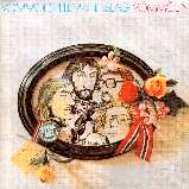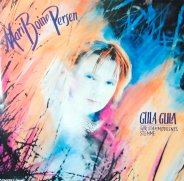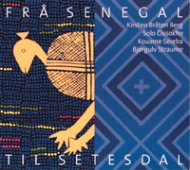Hunting for the Gold at the end of the Rainbow: Identity and Global Romanticism
On the Roots of Ethnic Music
Tellef Kvifte
Professor of Folk Music, University of Oslo, Norway
Folk music and popular music represent in many ways two distinct cultural spheres with few contact points, except when borders have to be defined, or when a rare strategic alliance against the cultural hegemony of classical art music is formed.[1] For some, the study of folk music can be a quite different academic discipline from the study of popular music, with the possibility of a long academic career without any contact with the other. Yet it would seem that one important point of contact might be related to the etymology of 'folk'; both disciplines study the music of the people. But of course, we are not referring to the same people. The 'folk' in the folk music tradition are a construct of the national romantic era, usually referring to peasants, living close to nature, while the folk of the 'popular' are more constructs of urban and modern society.
Given the fundamental differences in ideology one finds here, it may be surprising to find a strong alliance between the two groups, even a strong style tradition where traditions from popular and folk music alike contribute to the musical result. What I have in mind here is that of 'world music', ethno pop', 'ethnic wave' or, as I call it, 'global romanticism'. The concept of global romanticism (or GR as I will call it from now on) is borrowed from others. I came across the concept for the first time in 1997, when I was asked to give a short talk at the Norrsken meeting in Falun on 'The Myths of Global Romanticism'. I took it for granted that the concept was invented by Magnus Bäckström, who was the head of the conference (and for many years, of the Falun Folk Music Festival). But during Norrsken I met several other people who claimed to have invented the concept. Subsequently, I never found out who was the real inventor, but I took the many claims for authorship as a sign of the usefulness of the concept.
The Roots of GR: National Romanticism and the PMM
I would like to suggest that national romanticism is one of the roots of GR. National romantic ideology has been part of the folk music history to this day, either as an obvious, unarticulated ideological basis for folk music activity, or as a conservative form of expression from which one explicitly dissociates oneself. It is tempting to view GR as a modern, popular music version of the national romantic ideology, with exoticism and nature mysticism as common elements.
Another important historical root of GR is the meeting point between the two versions of 'folk'. 'People' needed an ideological bridge, and such a bridge was, at least in the Scandinavian countries, found in the '70s, in a movement called den progressive musikkbevegelsen (the Progressive Music Movement or 'PMM'). The keyword was neither 'folk music' nor 'popular music', but 'the music of the people'. By finding a term that incorporated people without explicit reference to either 'folk music' or 'popular music', one had a term that could be extended in any direction. Of course, the PMM also had its own version of who the people were. In this case the reference was to Marxism, with the 'people' represented by the working class. The core of PMM music was rock and rock-inspired music with left-wing political lyrics. One of the most important bands in Norway in this genre, was Vømmøl spelemannslag. The central figure, Hans Rotmo, wrote the lyrics, depicting class struggle and the life of the lower classes in a small hypothetical village called Vømmøl. It is also interesting to notice the allusion to traditional music through the use of the term spelemannslag in the name of the band, meaning a 'fiddler's association', a term used for bands of fiddlers playing traditional Norwegian fiddle tunes.
Fig. 1
The cover of Vømmøl spelemannslag's first LP Vømmøl'n from 1974
(click the picture to hear musical example: 704K)
An important participant in the PMM in Norway was the record company Mai, ('May', implying May 1st) that during the 70s released a number of politically correct, but economically dubious productions. The great success of Vømmøl spelemannslag was probably the financical basis for most of the activity of the company. In Sweden, the company Musiknätet Vaxholm, played a similar role, and released productions with artists like Kebnekajse and Hoola Bandoola band.
The core of the PMM was formed by followers of Marx, Lenin and Mao, who regarded their music as part of their revolutionary struggle for a classless society. Yet the PMM also embraced many people with somewhat paler shades of red as their political colour. Among those were a group of folk music enthusiasts who felt more at home in the urban environment of the PMM than in the more countryside-national romantic environment of the traditional folk music movement. Notably the folk music movement of the PMM was probably stronger in Sweden than in Norway, (as may be seen from the later development of the folk music scene in the two countries), but nevertheless important to both countries.
The Swedish scholar Märta Ramsten uses the following part from a LP cover to illustrate the ideology of this variety of folk music:
One might say, that here in Malmö the folk music is an important part of the culture of the working class. This background is important to us playing on this record, also because we do not carry the tradition of the peasants that other folk musicians do. But we have other roots, other traditions to connect with... This is where we belong: in the struggle against commercialism, against the multinational conformity of music, against the idol culture... On the other hand, we do not belong to the peasant romanticism or country-side nostalgia." (from the LP Än svänger det. Spelmän på "Syd" i Malmö).
Here, part of the central dogma of the PMM is condensed in a few sentences. Clearly, they dissociate themselves from the main protagonists - the capitalistic forces and the national romanticists. What they stand for is mentioned briefly as 'working class culture' and 'folk music'; in other cases we find the expression 'the music of the people'.
It seemed as if there was a belief in the truth that real, authentic qualities were to be found in the music of the people, and not in the empty, profit based music of the capitalistic monopoly of multinational record companies. Yet, it was not always quite clear what should be considered as 'music of the people'. Not only was the debate fierce, it was also at times confused, even outright absurd.
Even if one was clearly opposed to the national-romantic ideology and its undermining of 'authentic' folk music, the PMMs still carried some obviously romantic notions of the sound which expressed simple life in close contact with the nature - sometimes easily mistaken for national- and peasant- romantic ideas. But when the folk musicians of the PMM went to see old fiddlers, it was not because they looked for the music of the peasants. Instead, they demonstrated an act of solidarity with the oppressed - the proletarian. The more oppressed people were, the better; the more oppressed a musical genre was, the more important was solidarity.
Among the folk music enthusiasts, this ideology was displayed through a style of fiddle playing that included rough bowing with much resin in the sound, and a heavy drone sound by bowing two or three strings. This style also displayed a certain distance from the more slick sound ideals of both commercial music national-romantic folk music versions.
Another important idea was that of local romanticism: 'real', authentic music should belong somewhere, in a local community, where it is created according to the needs of the people, formed by the nature, and polished through the loving care through generations of use. If a local community today happens to have no specific local music, it is because of the decline in industrial and post-industrial society, caused by the reckless capitalists and their exploitation of the people and their culture. Many recordings bear witness to this preoccupation with local communities, both in titles and in liner notes.
The local romanticism was closely connected to another central value; that people should control their own music. They should be able to control the production, use and distribution of their music, and not be dependent on the music that multinationals distributed. It is important that such viewpoints were not only held by the folk music part of the PMM, as one could expect, given the strong focus on local dialects the folk music performers and researchers had had for the last 100 years. Rock music was also seen as being made in local variants; one talked of 'stavangerrock' and 'trønderrock' - the latter was even a subject of scholarly papers. The important point here was not the musical genre as such, but the local control. (But, for some reason, the many local amateur symphony orchestras were not mentioned in this connection). Also, there was a tinge of ecology in the construction of this ideology: the multiplicity of local musics were seen as counteracting the uniformity imposed on the musics in the world by the multinationals.
This does not mean that the PMMs only focused on their own local community. On the contrary, the perspective was that small communities are found all over the world. Many folk music enthusiasts were also interested in similar genres from other parts of the globe. Nations as units, on the other hand, were regarded as capitalist constructions. Global solidarity was not something to be extended to nations, but to allies belonging to the working class and oppressed people.
Given this, one can only wonder if this close connection between the folk music and the PMM in Scandinavia was because of the coincidal similarity between the expressions folkemusikk (folk music) and folkets musikk (the music of the people). If the PMM had chosen a term like 'the music of the proletarians', or the folk music enthusiasts had stuck with the older term 'national music', the connection might not have been that obvious, and Scandinavian music history might have been somewhat different.
The GR Myths
How much of the national romanticism and the PMM ideology do we find in the global romanticism? In my opinion, quite a lot. Of course, the proletarians are no longer the central category. Their role is taken by the fourth world people in global romanticism, and the music should no longer sound 'traditional' or like 'folk', but 'ethnic'. Instruments like the jaw's harp[2] and hardanger fiddle are not 'out' for this reason; they have just changed function from 'folk' signals to 'ethnic' signals. In the '70s, it was important to be seen as oppressed, today it is important to be ethnic. The connection may be that to be regarded as a real 'ethnic', you also have to be oppressed and exploited. A poor Indian in Peru is more ethnic than a London stockbroker. If we regard the GR as an apolitical variety of the PMM, I think we have covered the central ideological values. Geographic origin (i.e. the local community) may still be used as an argument for authenticity. And the value attached to people's own control over their music is still large, but may be focused on the multinationals' exploitation of ethnic groups more than of the working class. Steven Feld's description of the fate of a Pygmy sound in the media world is a case in point .
The hunt for the 'exotic' is the same, or even stronger. One may see a direct continuation from the hunt for the almost extinct fiddlers of the folk music enthusiasts of PMM to the ever widening horizon of interest typical of global romanticism. A musical genre may function as exotic only for a limited period of time. When you have heard a sufficiently large number of fiddle tunes from a certain place, you will have to search elsewhere for exotic music. For example, when overtone flutes and jaw's harps became too familiar, the didgeridoo entered the scene, and in ten years, the didgeridoo changed from an almost-forgotten secret known only to a few ethnomusicologist outside the aboriginal context in Australia, to a popular instrument taught at courses during the Falun Festival. I will never forget the sight and sound of 30 didgeridoo-novices practising in the Kristina park in Falun during one of the festivals in the mid 90s, in a split second transforming my image of the instrument from the highest level of authenticity to a mere fad.
One of the paradoxes of PMM folk music was that even if the music was identified with a certain small community somewhere, most of it sounded surprisingly similar to music belonging elsewhere. Also today - 'ethnic music' may seem almost the same regardless the ethnic origin if the music.
In this sense, to sound 'ethnic' is related to style on its own, with it no longer being necessary to have a reference to an existing ethnic group. One may find any combination of ethnic musical symbols with such a reference (like didgeridoo) with general ethnic symbols (like jaw's harp) with non-ethnic international popular music. By means of a recording, I will now emphasize the point being made. I have chosen the tune Oppskrift for herrefolk ("Recipe for a Master Race") from Mari Boine's Gula Gula, recorded in 1989:
Fig. 2
The cover of the original version of Gula Gula from 1989
(click the picture to hear musical example: 703K)
Apart from Mari Boine's voice, we can hear percussion - thimble on cymbal - by Unni Damslora from Oslo, electric bass by Gjermund Silseth from Surnadal, overtone flute by Ale Møller from Malmö, charango by Carlos Quipse, a Peruvian indian, and electric guitar by the other ethnic Sami in the band, Roger Ludvigsen. This list of musicians, indicating their geographic origin, is quite in style with the PGG covers. The difference now is that towns like Oslo and Malmö will be downplayed in the global romanticism context, while the PGGs would assign a working class identity to the musicians from the cities. The global romanticists will find it more relevant to mention the Peruvian indian and Sami identities, indicating that the focus now has changed to the 4th world people.[3]
Mari Boine's vocal part is experienced by many as a clear expression of Sami identity, and I have heard many people describe her singing as 'joik' - a traditional form of Sami 'singing'. However, Boine is quite clear about her singing not being 'joik', and her voice on the record is definitely not perceived as 'joik' by the Samis. Nevertheless, Boine's vocal qualities may very well be perceived by others as conveying a distinct Sami identity.
The other ethnic elements in the song are the charango - at this point in history carrying a general South-American indian identity, and the seljefløyte (literally 'willow flute' - an overtone flute) suggesting a general Scandinavian folk ethnic identity. In the instrumental part, the ethnic seljefløyte is played against the electric guitar in a kind of musical battle, suggesting the struggle between the opressed (willow flute) and the 'Master Race' (the electric guitar).
Interestingly, the electric guitar is not heard in the international version of the record. When Gula Gula was to be released on the Real World label, Peter Gabriel, in addition to designing a new cover, asked for a remix of this track. At this point, the guitar was replaced by a cimbalom.
Fig. 3
The Real World version of Gula Gula
(click the picture to hear musical example: 701K)
Without going into the question of this change was for the better or worse, it would seem uncontroversial to state that the ethnic profile of the song was stronger, yet it is almost impossible to say exactly what specific ethnicity became stronger. Even if the cimbalom plays the same scale as the seljefløyte, it does not sound Norwegian or Nordic because of the instrument sound. On the other hand, the scale weakens the possible connection to the middle east or East-Europe that it otherwise might have had. One might also observe that the new cover picture make the 'nature' connotations stronger than the original cover, as a parallel to the change from electric guitar to cimbalom in the sound.[4]
But why make the arrangement like this? If the ethnic sound is important, one would believe it to be more effective for Mari Boine to cultivate one single ethnicity instead of introducing a number of conflicting ethnic signals, which might tend to cancel each other out. What then, is the underlying quality of the 'general ethnic musician'? To me, there seems to be some parallels to the 'general electric' rock musicians, where one also may note the emergence of a kind of generalized electric identities, as distinct from the more specific identities of distinct stylistic expressions.
I do not think Mari Boine herself would characterize her own music as 'general ethnic'. May be she would have preferred a term like 'multi-ethnic'. To her, the inclusion of a South-American Indian in the band, is meant more as an expression of solidarity with another oppressed group of people than as an extension of the aesthetic repertoire.
But how should we distinguish 'general ethnic' from 'multi-ethnic'? To me the following example is more multi-ethnic than the previous. Here, on the CD From Senegal to Setesdal, Kirsten Bråten Berg, Bjørgulv Straume (both from Norway) Kouame Sereba (from the Ivory Coast) and Solo Cissokho (from Senegal) essentially stick to their own traditions, with very little stylistic adaptation - they rely on finding ways of playing and singing within their existing repertoires that fits in with the others.
Fig. 4
From Senegal to Setesdal
(click the picture to hear musical example: 1.1MB)
On the receiving end, the distinction general and multi-ethnic may reflect more or less distinct audiences, the latter a somewhat narrower specialist audience that still like to be able to identify the ethnic, geographic and stylistic background of the music they hear. But to many listeners, the core of GR is not to be able to identify specific places and people, or to feel solidarity with the oppressed - I believe the core is the hunt for authenticity and the struggle to find one's own identity in a multitude of possibilities offered in the modern personality market.
From this perspective it makes sense to consider ethnicity as a feature on its own, detached from specific ethnic groups: the 'general ethnic' property, that is tied to a certain type of exoticism where one is looking for 'the credible alien'. In the global romantic movement, street credibility is traded for forest credibility.
But connecting the 'ethnic' to the 'exotic' has its pitfalls. In a sense, 'being ethnic' is reserved for other people, as the path to credibility and authenticity I see this as the modernist tragedy: the hunt for a credible authentic identity that becomes like the hunt for the gold at the end of the rainbow. As you move towards it, it slips further away.
Concluding Remarks
From the musics from the national romantic era up to this day, there is a strong current of identity themes. To the national romanticists, the relationship between ethnicity and nation was important. They had two relatively clear role models, one in the ideal-typical peasant, closely anchored in the nature of his nation, the other in the culturally-sophisticated urban cosmopolitan bourgeoisie.
The popular music emerging in the 1950s also offered clear identity models, with distinct sex roles and the teenagers as the ideal state of being. In the progressive music movement, ethnicity was to a large extent fused with class. Still, the role models are clear, as evident in the cultural worker deeply rooted in a local community, but with strong global awareness and solidarity. From the '80s, the identity picture becomes more blurred, and to this very day the role models are both proliferating and questionable, with no easy answers for identity-seeking persons. In popular musics, this is expressed in the sex-role identities offered - today the possibilities far exceed the limitations of binary types.
The domain of the global romantic may seem like a safe place, where we let fourth world people show us that it is still possible to keep a clear identity in a turbulent world. That the same fourth world peoples may have just as big problems with their identities as anybody else, seems a minor matter in this context.
Part of the GR ethos is that if you know who you are and where you belong, you are better equipped to understand other people in the world. This notion was present in the national romantic era, when artists like the composer Edvard Grieg and the violinist Ole Bull were strong national Norwegian symbols, working to strengthen Norwegian identity, and at the same time very active internationally and aware of international political matters. The same theme is also found in many of the music festivals today, where local, national and global trends are shown side by side. The progressive music movement also had a similar connection between global and local solidarity. Historically speaking, being proud of one's own identity and ethnicity is therefore not necessarily an expression of the type of nationalism that fuels a number of very serious conflicts and wars today. But the events in the Balkans, the Middle East, and East-Timor may challenge the GR ethos, and remind us that symbols are easily transferred from one context to another. What is a symbol of global solidarity in one context may be redefined and re-employed in a context of ethnic cleansing.
Again, the central dilemma of the PMM shows up again: global and local solidarity may in principle be expressed in two very different ways, either by stressing the local colour and style, or by using a common, globally-known style like rock music. In the first case, one runs the risk of being taken for being a nationalistic fanatic, while in the second case, one may easily be engulfed by the multinational capitalist industry.
As an old relic from the '70s, I feel this dilemma is as strong today as it was, and, at the same time, with identity increasingly being made into a personal and not political theme. To this extent then, while the PMM have won a few battles about the music, they have definitely lost the political struggle.
Bibliography
Feld, S. (1996). Pygmy POP. A Genealogy of Schizophonic Mimesis. Yearbook for Traditional Music 28: 1/35.
Ledang, O. K. (1980). Trønderrock - folkemusikk eller kva? Studia musicologica norvegica 6: 59-80.
Notes
[1] As when traditional musicians and rock musicians join forces to get a small portion of the state funding given to art music.
[2] This instrument is known under a confusing variety of names, including, Jew's harp, Jewish harp, guimbarde and mouth harp to name a few.
[3] 'Fourth world people' is used here to denote Samis, Indians, the Aboriginals in Australia etc - meaning that they are even worse off than the third world people.
[4] This point was suggested to me by Derek Scott.





